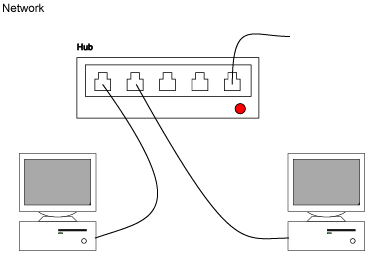W3C Web Accessibility Initiative
Leading the Web to its full potential
Charles McCathieNevile --charles@w3.org
World Wide Web Consortium (W3C)
(versión original en espagnol )
The Web - Better for everyone?
Description
A cartoon I made. Somone in a wheelchair is at the bottom of the stairs. At
the top of the stairs is a computer, showing a red and a green button and the
word "VOTE!". A banner on the image proclaims "democracy"
Picture by Charles McCathieNevile ,
1999.
What is the World Wide Web Consortium?
World Wide Web Consortium (W3C )
What do we do at W3C?
About 65 members of the team (employed by W3C) work with around 50
groups
The groups are employees of member organisations, and invited experts..
They create and publish the standards of the Web (HTML, XML, etc)
The official language of W3C is English, but we have an
Internationalisation activity to
Coordinate translations of our publications
Ensure that our specifications are useful throughout the world
The Web Accessibility Initiative at W3C
W3C hosts the Web Accessibility Initiative (WAI )
One of four administrative divisions (domains) of W3C
representatives of industry, government, users and researchers
WAI has some additional sponsors
American (US, Canada) and European (EU) governments
Industry sponsors - Bell Atlantic, IBM, Microsoft and
others
How do we work?
Working groups operate under the process of W3C
WAI includes a high proportion of invited experts
The work is done via
Email lists (mostly public)
Telephone meetings (weekly or fortnightly)
Physical meetings (2 or 3 per year)
What does WAI do?
Ensure the accessibility of W3C's work
Create guidelines for accessibility
Develop tools to evaluate and repair accessibility
Conduct education and outreach
1. Ensure the accessibility of our work
WAI works with other groups in W3C on the accessibility of their
specifications:
HTML 4.0 , CSS2 :
Seperating the information's structure and content from its
presentation
SMIL , SVG
XLink, XHTML, DOM, Schemas, and others
Improving the accessibility of XML
2. Create Guidelines for Accessibility
We Work on More Guidelines
User Agent Accessibility
Guidelines
How to make accessible user agents (browsers, plugins, ...)
Accessibility of the software and communication with assistive
technology
Finished "Last Call". Hopefully published as a Recommendation early
2001
XML Accessibility Guidelines
How to create XML languages that support accessibility.
3. Coordinate Accessibility Tools
Coordinate research and development of tools to facilitate accessibility .
Evaluation of the accessibility of content
Repair tools
Tools to improve or repair the accessibility of content: rdfpic,
aprompt
Conversion tools
4. Conduct Education and Outreach Activities
Education & Outreach Working Group coordinates:
Promotional materials, brochures, films, ...
Simplified and education material (e.g. Quick Tips , Curriculum)
Outreach campaigns and presentations
Tracking policies and laws
Quick Tips
Now available in over 15 Languages
First translation available was Spanish - Muchas Gracias a Rafael Romero y
SIDAR!
New Languages for the Web: SMIL and SVG
Description
An image of several different devices presenting the word "XYZ" in
different media
by Charles McCathieNevile , 1999.
What is SMIL?
A language for synchronised presentations
Describes synchronisation for parts of a presentation
Images
Captions
Video (and more)
Version 1.0 is a W3C Recommendation (1998)
Version 2.0 has finished "Last Call" - the group thinks it has
finished.
Example: "car"
What is SVG?
Scalable Vector Graphics
An XML language for images
Does many of the same things as Flash, but accessibly
Uses CSS for the style of a presentation
An example of SVG
Comparison
Bitmap Version
SVG Version
After magnification...
The bitmap version
And with SVG...
Text in SVG:
HTML inside SVG
It is possible to use HTML or another XML language
within SVG to provide text with all the features (links, structure, etc)
of that language.
Alternatives in SVG
with CSS can be...
Network
Hub A typical 10baseT/100BaseTX network hub
Computer A A common desktop PC
Computer B A common desktop PC
Cable A 10BaseT twisted pair cable
Cable B 10BaseT twisted pair cable
Cable N 10BaseT twisted pair cable
and we can do better with XSLT
Network:
An example of a computer network based on a hub
With these components
Hub A typical 10baseT/100BaseTX network hub
Computer A y Computer B Common desktop PC
Cable A , Cable B y Cable N 10BaseT twisted pair cable
Captions (SMIL 1.0 y 2.0)
<!-- CAPTIONS -->
<switch>
<textstream src="carcaps.rt"
region="textregion" system-captions="on"/>
</switch> Descriptions of video (SMIL 2.0)
<!-- AUDIO DESCRIPTIONS -->
<audio src="cardesc.rm" systemAudioDesc="on"
systemOverdubOrSubtitle="overdub"/>
<!-- TEXT DESCRIPTIONS -->
<textstream src="cardescap.rt" systemAudioDesc="on"
systemCaptions="on"/>Control of the language (SVG y SMIL)
<!-- AUDIO -->
<switch>
<audio src="carnarren.rm" systemLanguage="en" />
<audio src="carnarde.rm" systemLanguage="de" />
<audio src="carnarres.rm" systemLanguage="es" />
<audio src="carnarren.rm"/>
</switch> Accessible Animations
SMIL 2.0 y SVG provide a way to create accessible animations. There are examples in the Note "Accessibiltiy
features of SVG".
Resources
Thank You!
This presentation is on the Web, like all W3C presentations :
http://www.w3.org/Talks
Questions?
Q: A:
Improve the way Amaya uses APIs (especially in Windows). The team
is working on using GTK for the Linux version, and Sun are working
on improving the gspeech application which is a free speech module
available for GTK.
Create a free reader or text-to-speech engine en Spanish, like
festival and MBROLA, which are available for several languages in
Linux
Complete the translation of Amaya into Spanish, for example
translating the documentation.
Actually, the Amaya team is too small to do this alone. It is an Open
source project, and if somebody wants to work on it one of the team
members speaks Spanish, and the team are always happy to help new
programmers, translators, etc. as much as they are able.
Q: When will WAI work more on the XML
accessiblity Guidelines?A:





